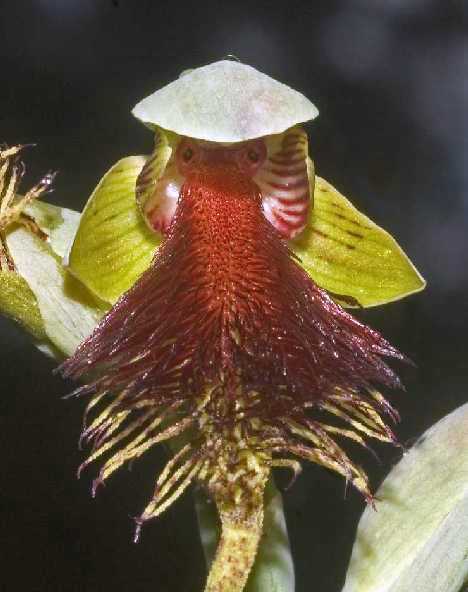Mark Sullivan
*****istrator of 1%FOC
The Orchid Conservation Coalition has started a new initiative to document and bring stories of orchid habitat loss, preservation and restoration to the orchid growing community and the public. The first seven orchid conservation stories can be seen at: http://www.orchidconservationcoalition.org/hl/index.html

 Calochilus pulchellus and it’s original habitat before rescue. This habitat is lost to development. photos by Alan Stephenson
Calochilus pulchellus and it’s original habitat before rescue. This habitat is lost to development. photos by Alan Stephenson
The stories include three from Australia about Calochilus pulchellus, Corunastylis superba, Prasophyllum affine and Cryptostylis hunteriana. Corunastylis superba is known from one area, part of which has been wiped out by the placement of a gas line. Road building may have done in the rest. On these web pages you can read about the struggle to save Calochilus pulchellus, Prasophyllum affine and Cryptostylis hunteriana from development. Only formally described in March 2007, Calochilus pulchellus was known from 25 plants before 5 of those orchids were threatened by destruction from development. The story tells of relocating the orchids literally in front of the earth clearing machinery. The ultimate success of this relocation is yet to be determined.
There is a picture of deforestation in Bolivia near where the second ever plant of Masdevallia vasquezii was found and the only site for Masdevallia burianii. The story from Ecuador is about the commercial growing of naranjilla in the Pastaza River valley. This is the same valley that the EcoMinga Foundation http://www.ecominga.net is trying to save in part with its Rio Anzu Reserve.
From Indonesia, there is a story about the regular burning of fields and forests in Central Sulawesi. This forest is very rich in orchids, many of which are still undescribed and known from nowhere else.

Dendrobium vogelsangii regenerating on a burned tree in Central Sulawesi. photo by Peter O’Byrne
From Nebraska, USA, there is a story about the saving by volunteers and Omaha Henry Doorly Zoo of Cypripedium candidum from a habitat that had become a lost cause because of development of roads and houses. This site is only one of seven known sites of Cypripedium candidum in Nebraska.
The Orchid Conservation Coalition is a nonprofit that is so non profit it does not take donations of any kind.
If you have any questions or want to discuss anything feel free post them on this forum or contact me at: [email protected]
Mark Sullivan


The stories include three from Australia about Calochilus pulchellus, Corunastylis superba, Prasophyllum affine and Cryptostylis hunteriana. Corunastylis superba is known from one area, part of which has been wiped out by the placement of a gas line. Road building may have done in the rest. On these web pages you can read about the struggle to save Calochilus pulchellus, Prasophyllum affine and Cryptostylis hunteriana from development. Only formally described in March 2007, Calochilus pulchellus was known from 25 plants before 5 of those orchids were threatened by destruction from development. The story tells of relocating the orchids literally in front of the earth clearing machinery. The ultimate success of this relocation is yet to be determined.
There is a picture of deforestation in Bolivia near where the second ever plant of Masdevallia vasquezii was found and the only site for Masdevallia burianii. The story from Ecuador is about the commercial growing of naranjilla in the Pastaza River valley. This is the same valley that the EcoMinga Foundation http://www.ecominga.net is trying to save in part with its Rio Anzu Reserve.
From Indonesia, there is a story about the regular burning of fields and forests in Central Sulawesi. This forest is very rich in orchids, many of which are still undescribed and known from nowhere else.

Dendrobium vogelsangii regenerating on a burned tree in Central Sulawesi. photo by Peter O’Byrne
From Nebraska, USA, there is a story about the saving by volunteers and Omaha Henry Doorly Zoo of Cypripedium candidum from a habitat that had become a lost cause because of development of roads and houses. This site is only one of seven known sites of Cypripedium candidum in Nebraska.
The Orchid Conservation Coalition is a nonprofit that is so non profit it does not take donations of any kind.
If you have any questions or want to discuss anything feel free post them on this forum or contact me at: [email protected]
Mark Sullivan



